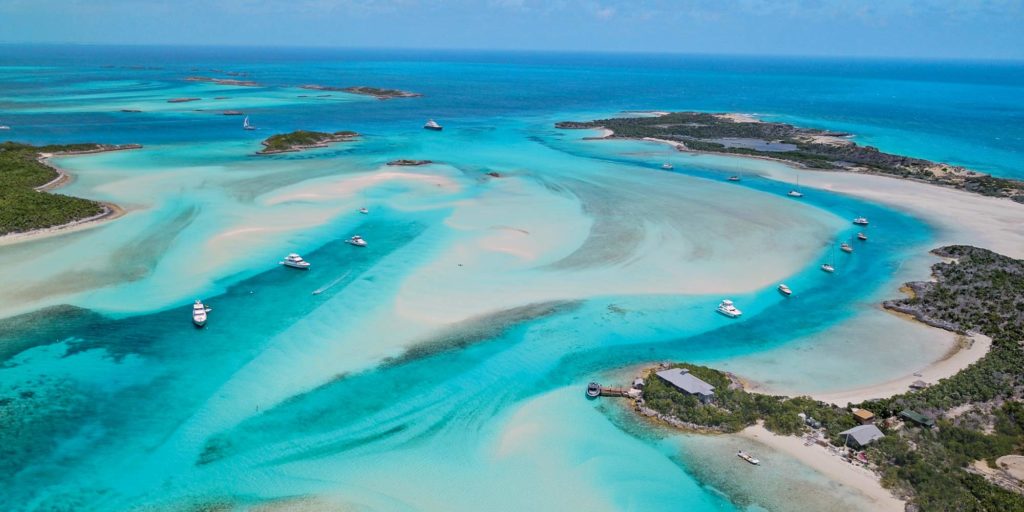
The Bahamas’ Exuma Cays Land and Sea Park stretches for 22 miles, from Wax Cay Cut at the north end to Conch Cut in the south. Established in 1959, the park is a marine protected area, and as such, is a no-take zone, both on land and under the water. It’s a special place and a favorite among cruising sailors, with many returning year after year. New for the 2018-2019 winter season, cruisers visiting the park will encounter modest anchorage fees, which will help support the park’s renewed commitment to marine conservation and educational outreach (see “If You Go” at the bottom of this article).
Protecting the flora and fauna of the 176-square-mile park while also educating visitors and nearby communities about the importance of the park’s mission is a big job. Brent Burrows started his position as park warden in February 2018. He was born and raised in the Bahamas and used to spend vacation time with his family cruising the Exumas. After graduating from the College of Charleston, he went to work in the charter-yacht industry and worked toward his Yachtmaster license. When the warden position came up, he decided to go for it. “This has been a great opportunity to give back to the Bahamas and apply the skills I learned in yachting to something much more meaningful and fulfilling,” Burrows said. “To be a key player in this two-year redevelopment project of the park, a place that has forever been extremely special to me, is incredibly rewarding. I haven’t looked back since!”
With so many cruisers heading to the park on their annual southern sojourn, we thought that it would be a good time to get inside information on this piece of paradise and meet the guy in charge.
Cruising World: What’s a typical work day like for you?
Brent Burrows: I am based out of Warderick Wells full time — nearly in the center of the Exuma Cays Land and Sea Park. The best part about this job is that there is no typical work day! Every day — and night — is different and exciting; it’s one of my favorite aspects of this job. As a park warden, I am expected to be on call 24 hours a day to deal with patrols, mooring installations and repairs, poaching response, vessels in distress, assisting tourists and visitors, leading hikes or dives, maintenance work, assisting scientists and researchers, and responding to wildlife events.
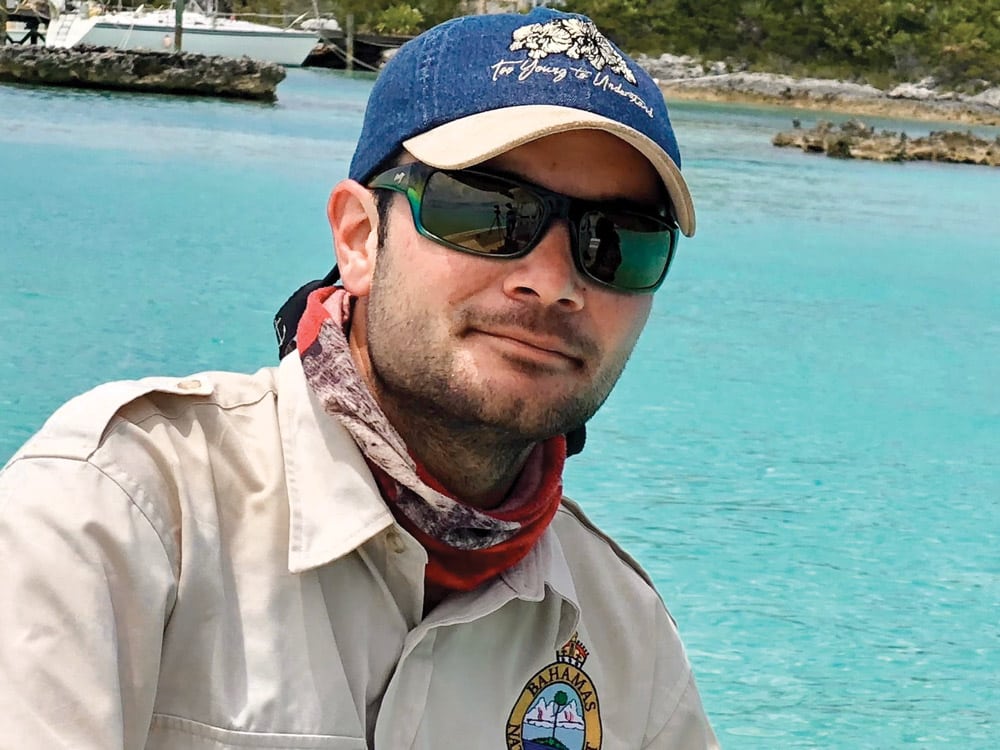
CW: What’s your favorite place in the park (above and below the water)?
BB: Honestly, you could spend a full week here and not come close to experiencing all that the park has to offer. For above water, I’d definitely have to recommend the area of sandbars between Shroud Cay and Hawksbill. Only accessible by small tender at low tide, this vast area is unreal in terms of having dozens of white sandbars and the most beautiful turquoise water forming little creeks and canals between them. It’s unlike anything you would have seen before. I also really enjoy the hike up to Bell Rock on the sound side of Cambridge. This isn’t a marked trail, and is definitely more suitable for the adventurous type, but once you make it to the top, the views are stunning. As for below water, I’m going to go with Danger Reef. Although it’s one of the more well-known spots, there’s just something incredible about swimming side by side with dozens of reef sharks and other marine life.
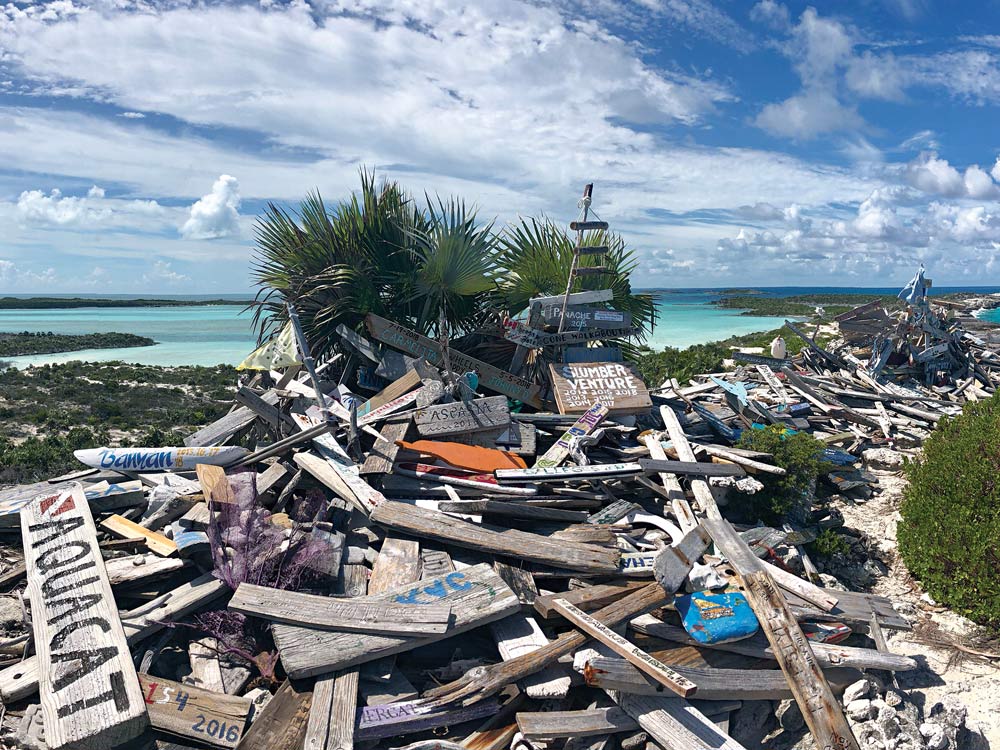
CW: What are some of the biggest changes and challenges facing the park?
BB: I think the biggest change to the park over the years has been the influx of visitors. The Exumas have become quite well-known in the past five to 10 years. Once a relatively quiet cruising area, we now, on a typical winter day, may see upward of 50 to 60 boats within the park boundaries alone. I think the ease of cruising the Exumas has been realized by many more. No longer do people fear this place for its uncharted shallow reefs and shifting sandbars; now, with resources like ActiveCaptain and more reliable charting, the Exumas have become accessible to even the most novice of cruiser. But with extra visitors comes extra strain on the park and its natural resources.
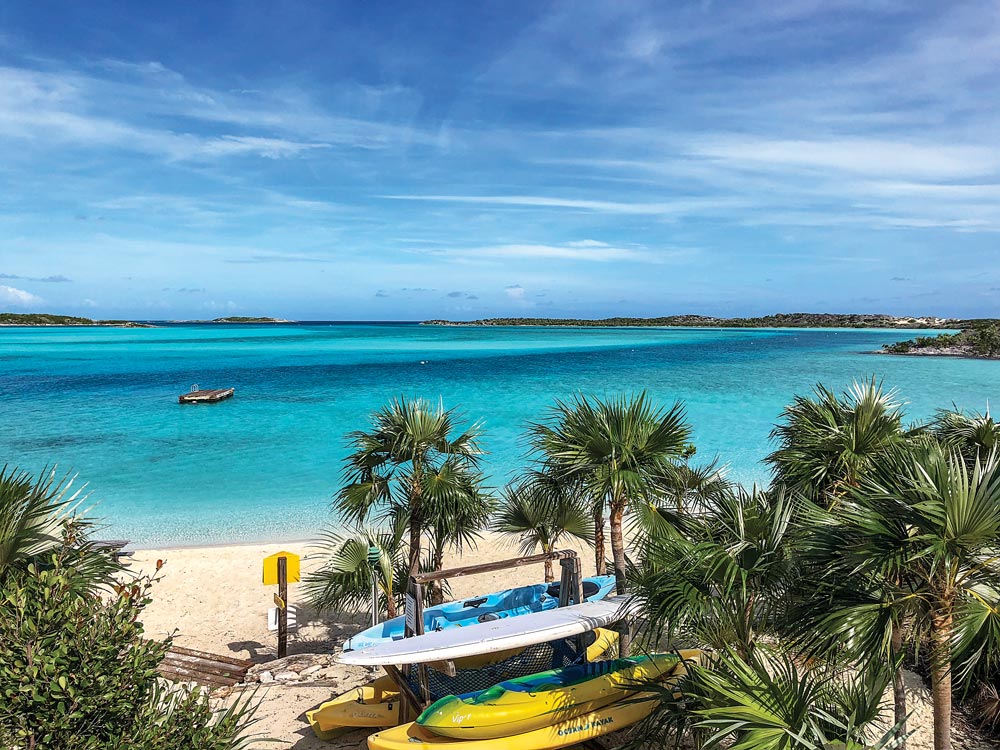
Funding, obviously, will always be a major challenge and something that we must constantly work on. Poaching is another issue that we are always seeking innovative ways to address. We know people poach in the park daily; that’s not a surprise for us. The issue is having the manpower and tools necessary to patrol and monitor the entire park on a daily basis. I will say that we have come a tremendous way in the past six months with implementing new monitoring technologies and new patrol methods, but we can always get better. A big help to our poaching response efforts has been developing relationships with the local community and visiting cruisers. We are available 24 hours a day, via VHF, email and WhatsApp, not only to provide assistance and advice, but also to respond to poaching and other illegal activity.
I can’t stress enough how important it is for the cruising community to report anything suspicious they might encounter during their stay in the park; we can use as many eyes and ears as we can get. This is another reason why we’ve stepped up our educational outreach programs. The more people who understand the importance of the park as a marine protected area, and its importance in providing long-term sustainable fisheries for the Bahamas, the less inclined they are to poach. Of course, catching poachers and prosecuting them also goes a long way in proving how serious we as a nation are when it comes to fisheries offences.
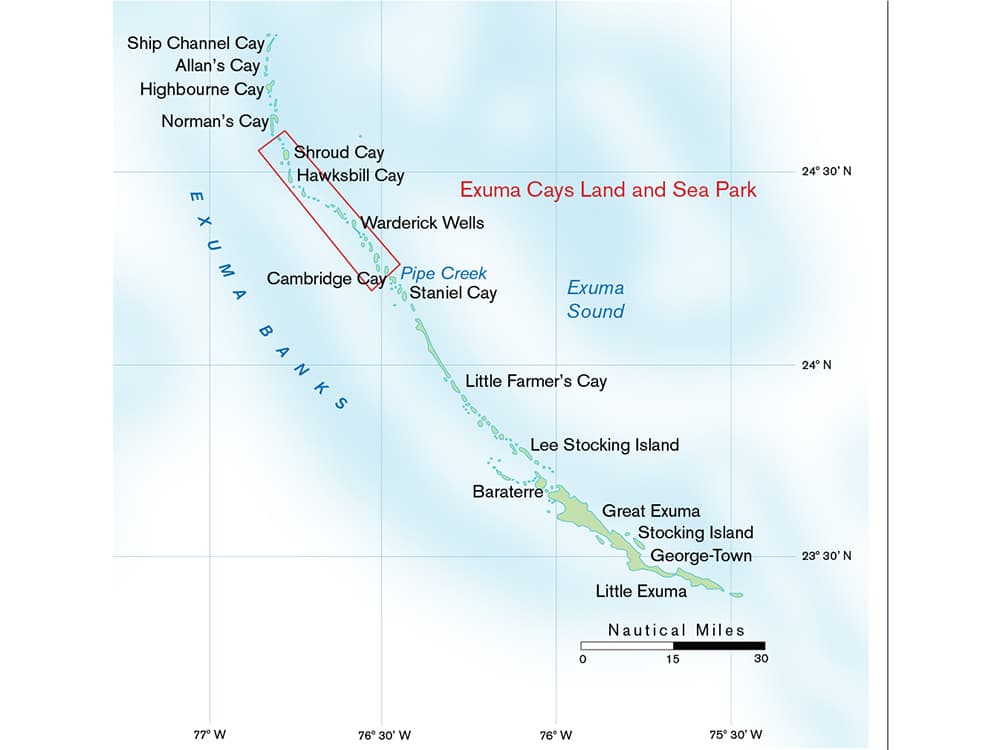
CW: How can visiting cruising sailors help?
BB: The best way that a visiting cruiser can help us is to simply spread the word and raise public awareness about the park. The ECLSP is the oldest land and sea park in the world, and the first protected area in the wider Caribbean. It’s a truly special place. Unfortunately, many people don’t realize its importance or significance. We need cruisers to get the word out there that this place is magnificent — one of the most pristine marine environments and cruising areas in the world — and it needs to be respected and supported. The more awareness we can raise, the more fundraising we can do, which in turn allows us to focus on three core areas of the marine protected area: conservation, education and enforcement. Unfortunately, the park currently runs at quite a substantial deficit, so when cruisers pay their seemingly small anchorage or mooring fee, it really does go an incredibly long way in helping to keep this place running and preserved the way it should be.
Jennifer Brett is CW’s senior editor.
If You Go
Within the boundaries of the Exuma Cays Land and Sea Park, you will find some of the best snorkeling and hiking that the Bahamas has to offer. Keep in mind while you’re there that the park is a no-take zone on land and sea.
Contact: Park staff monitors VHF 09 and 16; call “Exuma Park.” You can also reach the park by phone at 242-601-7438 or email exumapark@bnt.bs.
Moorings: There are six mooring fields throughout the park. The ones at Shroud Cay, Hawksbill Cay and Cambridge Cay are first come, first served. Moorings at Warderick Wells are assigned by park staff. Anchoring is allowed outside of mooring fields.
Fees: Mooring fees start at $20 per night and are based on boat size. New in 2018 are anchorage fees of 50 cents per foot for boats less than 90 feet and $1 per foot for larger. Payment can be made with a credit card at park headquarters, with cash at park drop boxes or online at the park’s website.








